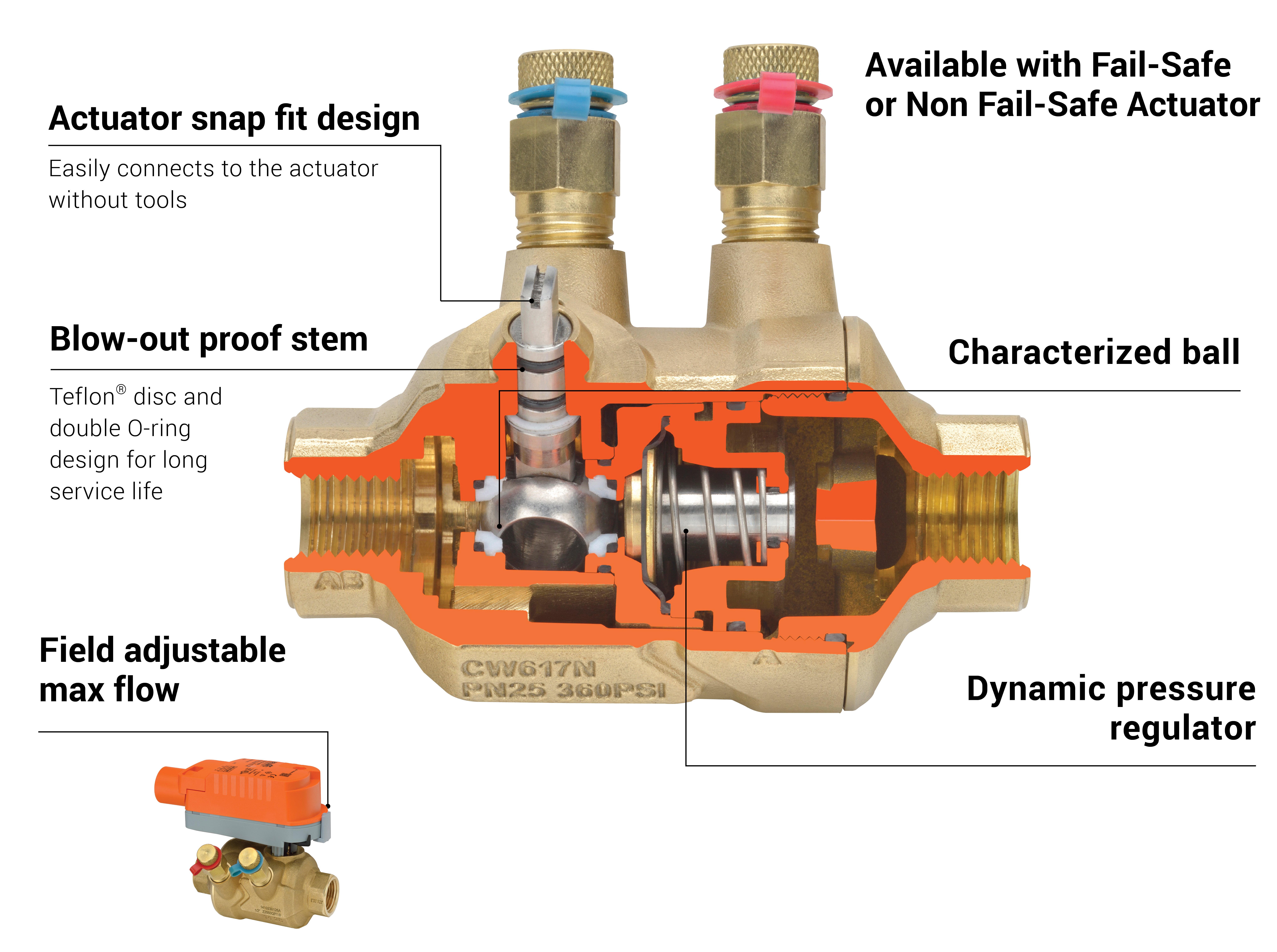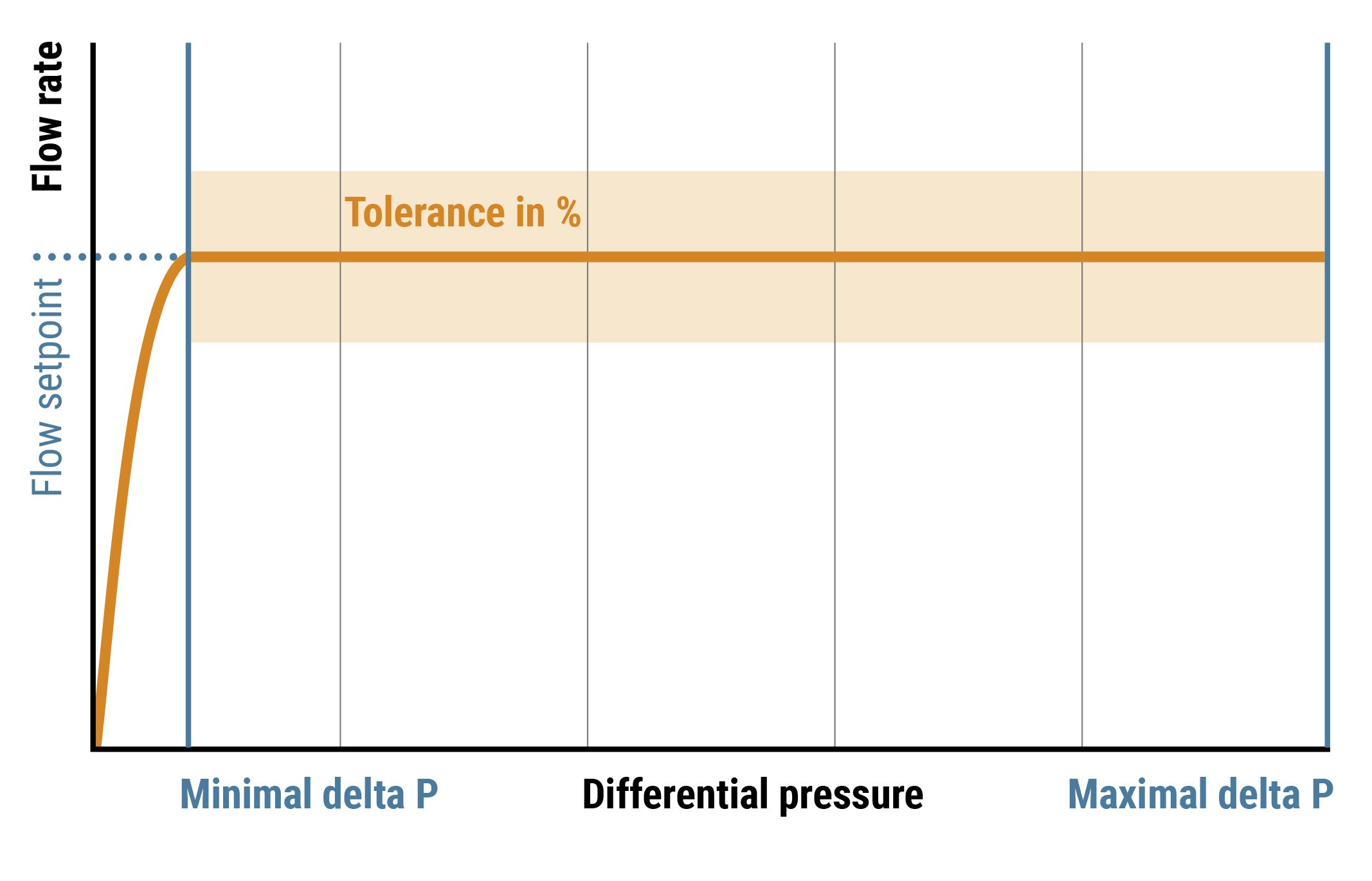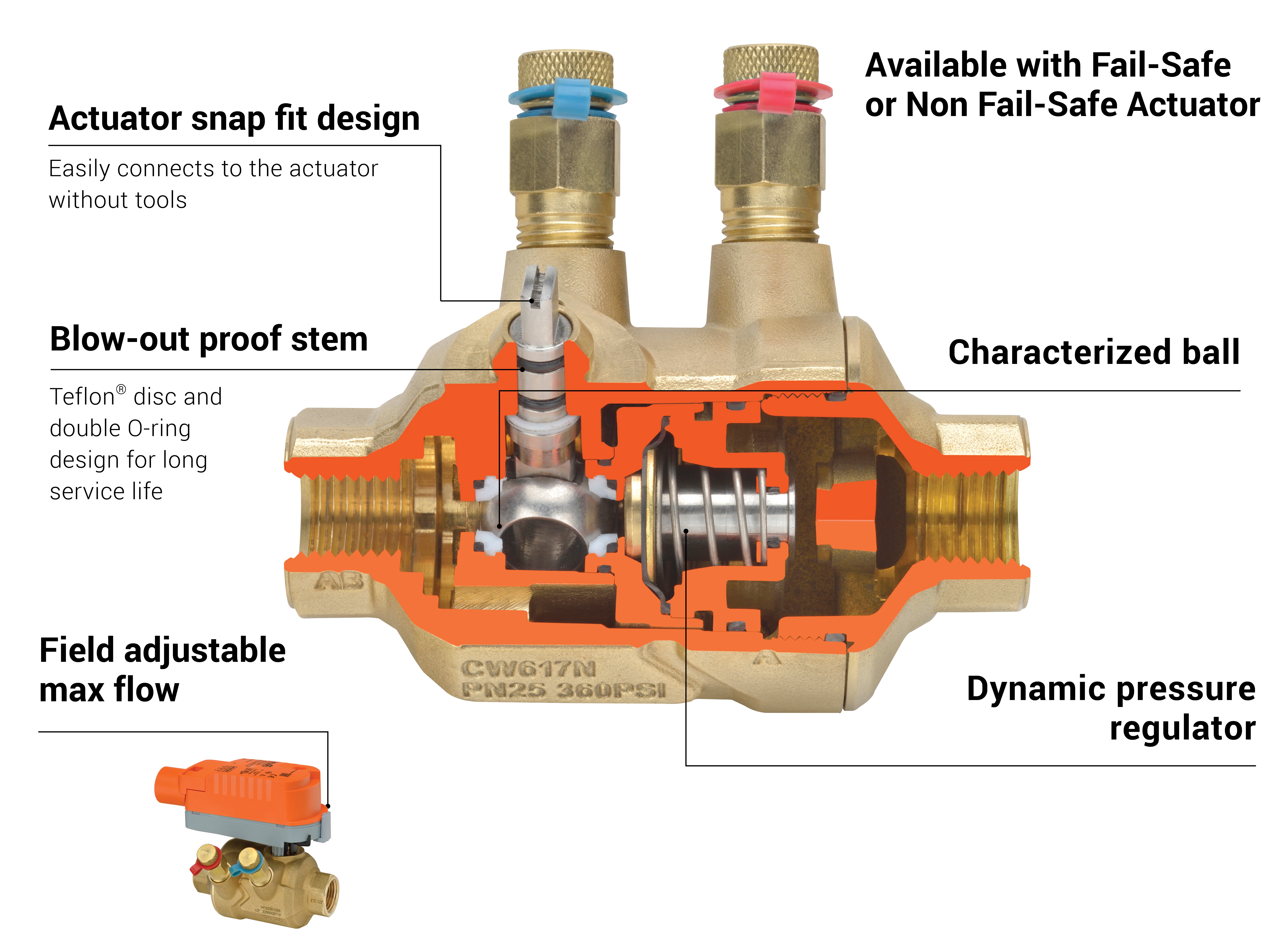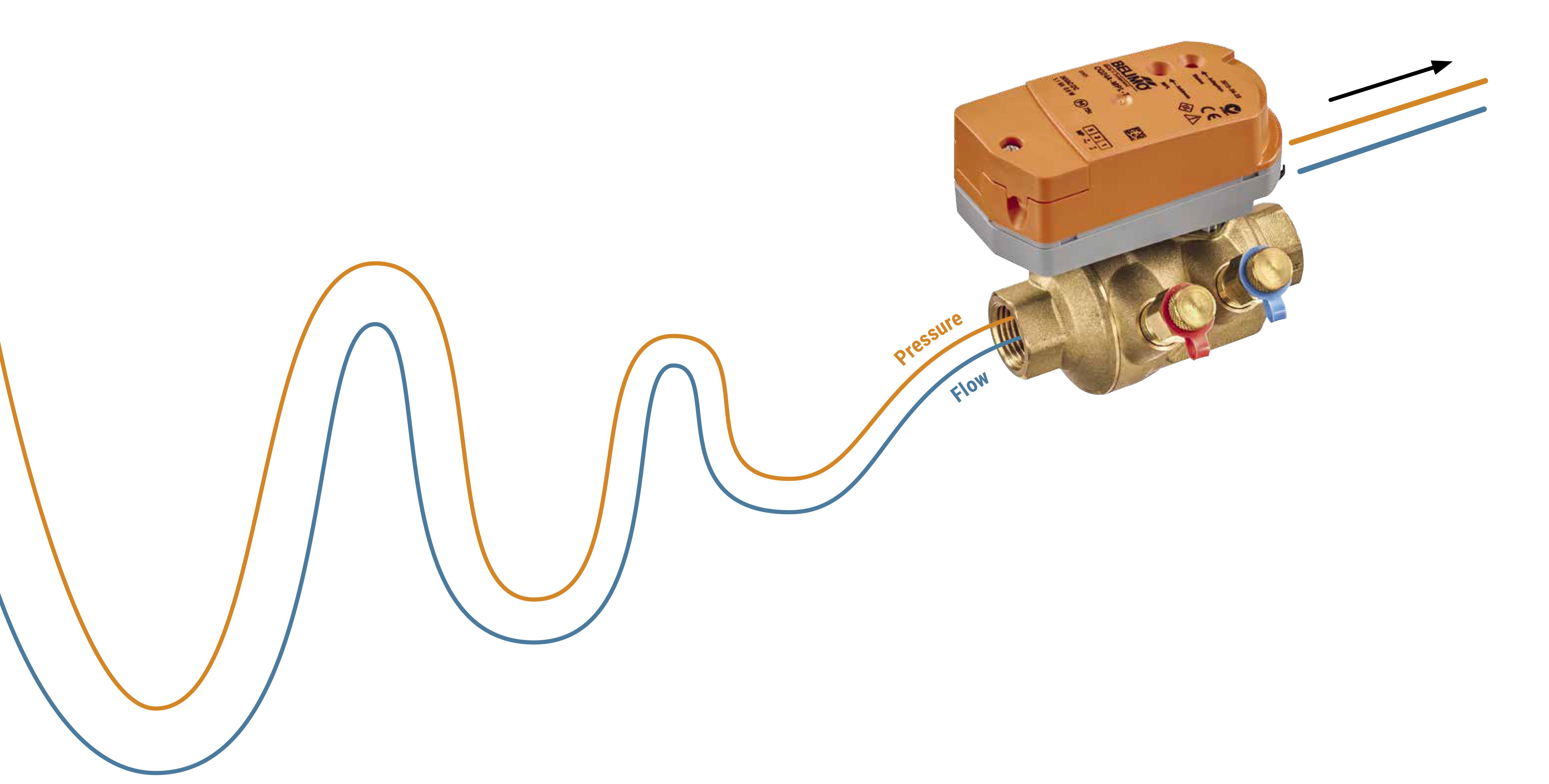Advantages and Challenges of Mechanical Pressure Independent Valves
The critical components of a mechanical pressure independent (PI) valve, also referred to as a dual valve, combine a differential pressure regulator with a 2-way control valve to supply a specific flow for each degree of ball opening regardless of system pressure fluctuations. The valve performs the function of a dynamic balancing valve and control valve in one unit. Shown in the figure below, the integrated pressure and temperature ports, referred to as “PT ports,” allow measurements during operation.
How mechanical PI valves work
PI valves require a minimum differential pressure to operate. This differential pressure is required to load the spring, which positions the diaphragm. If a hydronic system provides a differential pressure below this minimum, the pressure regulator mechanism cannot respond to pressure changes effectively, making the valve pressure dependent, causing inconsistent results. If the maximum differential pressure rating of the valve is exceeded, the diaphragm will be experiencing additional stress, which, if left for extended periods, can damage the regulator. Usually, hydronic systems are designed to deliver the differential pressure within the required range, with little or no additional equipment or design overhead.
Stabilizing pressure and flow changes with a mechanical PI valve (eg. PIQCV)
Challenges with mechanical PI valves
If you want to measure the flow, you need an additional device such as a machined orifice or venturi. While many PI valves are equipped with PT ports, they measure the differential pressure. Pressure drop across the PI valve body isn’t suitable for flow calculations, as its geometry moves with the regulator due to pressure changes. If you intend to verify flow with an external device, pay careful attention to the combined tolerance of both the valve and the measuring station. Several PI valves on the market report a theoretical or calculated flow based on the valve position, assuming that the delta P is within the required range and sufficient flow is available. Unfortunately, mechanical PI valves do not report delta P or the diaphragm position. For that reason, it is not advisable to calculate flow based on the valve position alone, as an isolated valve would still be reporting its theoretical flow.
Advantages of mechanical PI valves over pressure dependent valves
By controlling flow and eliminating the effects of pressure fluctuations, pressure independent valves eliminate the need for extra balancing valves. Incorporating the balancing function into the control valve minimizes installation cost and substantially reduces commissioning cost due to the elimination of the labor-intensive balancing process. PI valves can arrive at the job site pre-set to design flow, so no additional setup is required. They can be set to the full flow position to allow higher flushing velocities before being set to design flow.
Occupant comfort, installation simplicity, and ongoing flexibility have been the critical success of the mechanical PI valve. PI valves are selected on flow and do not require flow coefficient or valve authority calculations. Changes to the building’s existing hydronic system don’t affect PI valves avoiding costly re-balancing or comfort issues arising from not re-balancing.

Improve stability with mechanical PI valves
Value-added to the system with PI valves
Building owners realize the benefits of PI valves with energy savings and increased occupant comfort. Installers save significant labor costs by not installing balancing valves and a reduced commissioning program. Pressure independent valves stabilize the control of variable flow systems, offering greater efficiency and worry-free, dynamic balancing, making installation and commissioning a significantly more manageable task.


